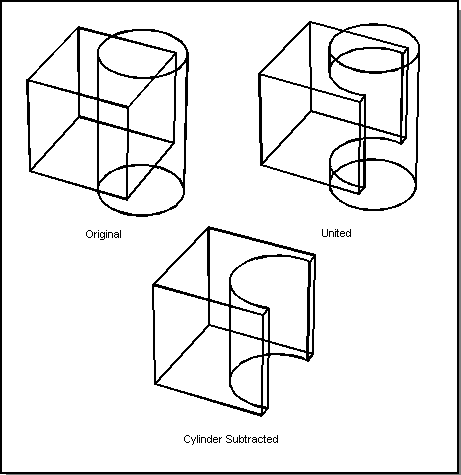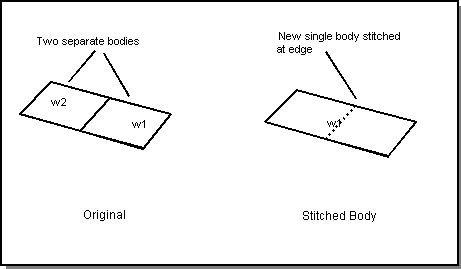Intersectors, Booleans, and Stitching
Intersectors
The Intersectors Component (INTR), determines intersections between geometric elements by finding the points or intervals at which curves and surfaces meet. Intersectors are implemented in low-level C++ classes that are not related to Booleans. Intersectors operate on model geometry.
Types of intersectors (that is, intersection algorithms) include:
- Curve-curve intersectors that return a data structure containing points.
- Curve-surface intersectors that return a data structure containing points.
- Surface-surface intersectors that returns a data structure containing curves.
In addition, INTR contains support for:
- Ray testing.
- Silhouettes.
- Parameter lines.
- Point classifications.
- Body checking.
- Curve and surface extension.
- Face area calculation.
- Mass properties calculation.
Topics include:
Booleans
Boolean operations (Booleans) perform the set operations unite, intersect, and subtract on bodies. Booleans operate on model topology. Booleans use intersectors to find intersections between bodies and then decide which pieces to group together and which to discard. A body may be composed of solid, sheet or wire components.

Figure. Booleans
Boolean operations include:
- Intersection Graph
- Slice
- Imprint
- Regularized and Non-regularized
- Glue
- Fuzzy Booleans
- Open Shell Booleans
- Embedded Faces and Wires
- Partial Booleans
- Selective Booleans
- Non-destructive Booleans
Stitching
Stitching joins two faces along edges or vertices that are identical. Stitching is not a Boolean operation; it is simpler than a Boolean because stitching avoids face-face intersections and the evaluation of lump and shell containments. Most of the overhead in a stitching operation is associated with comparing edges to determine if they are entirely identical (coincident) or share some coincident subregion. Stitching only operates on faces, not on wires. It joins faces to faces. If wires exist in one of the bodies being stitched, but do not participate in the stitch (that is, they do not coincide with edges in the other body), they will transfer to the resulting body.
The following igure is an example of stitching two sheets, w1 and w2, along their common edge to form the single body, w1.

Figure. Stitching
Stitching operations include:
[Top]
© 1989-2007 Spatial Corp., a Dassault Systèmes company. All rights reserved.